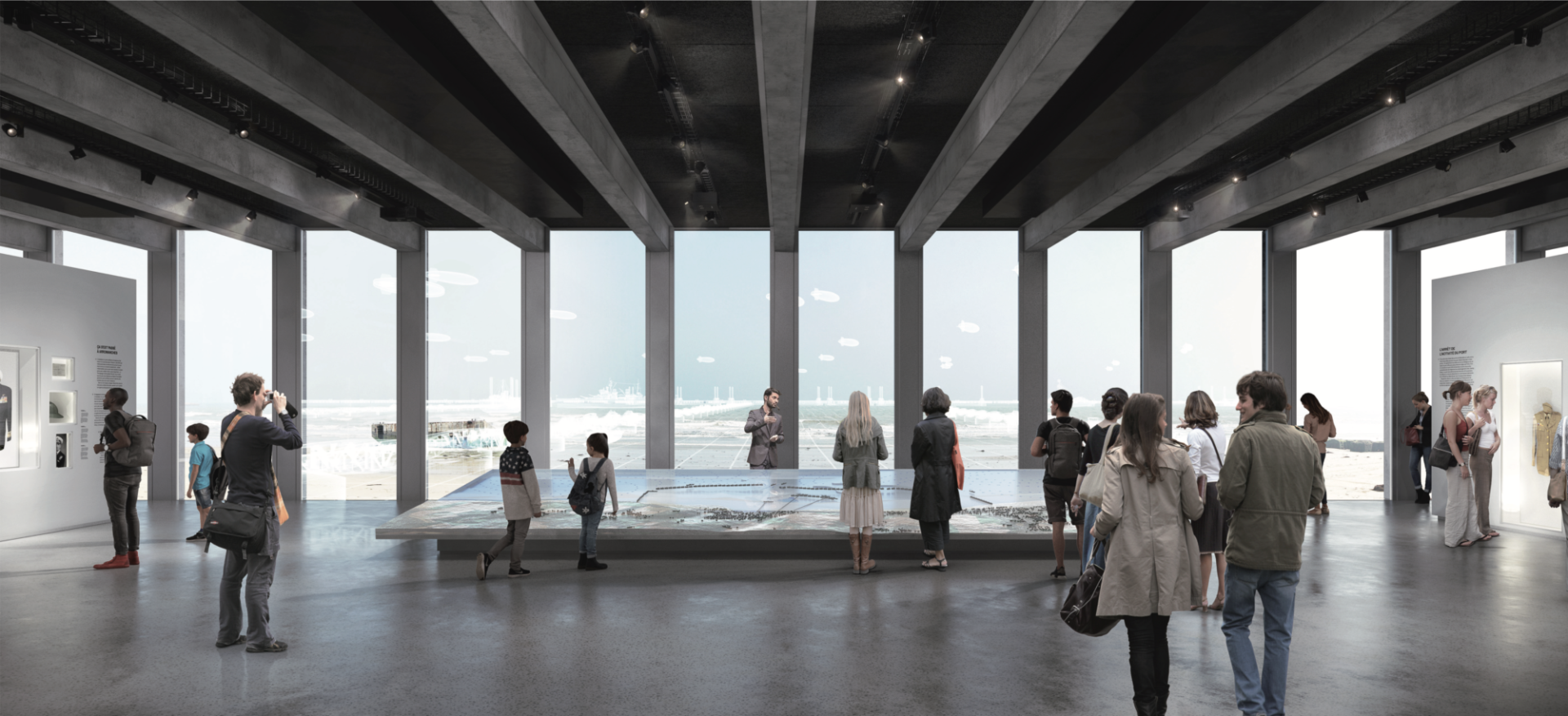Arromanches
AMO – D-Day Landing Museum
- uses
Contracting authority : SHEMA + Commune d’Arromanches
Mission : feasibility study, architectural and landscape programming, project management assistance
Area : 1740m2 SU
Cost : 7,4 M€ HT
Calendar : 2017 – 2020
Team : ATELIER IRIS CHERVET, FL&CO, LAMAYA, PIERRE NOÉ
Opened in 1953 and visited by 300,000 people per year, the D-Day Landing Museum is built on the port of Arromanches, on the very spot where the artificial harbour “Mulberry B” was built –the remains of which can still be seen as the tides change. A genuine site museum, it forms part of the landscape and history of the Battle of Normandy. The museum, which has already been enlarged twice, is a composite object that has never been completely redesigned; it has become outdated and too cramped. Aware of this state of affairs, the town of Arromanches launched feasibility and planning studies to restructure and extend the facility.
The rebirth of the museum will involve opening it up to the site and the city, creating new visitor reception areas, setting up a new museum itinerary and creating a new image for the building. The major challenge is to envision a scenario that will avoid closing the museum and maintain conditions for visitors during construction. A debate was begun about the heritage value of the original museum itself as a reminder of the Reconstruction period, and designers were given the choice of either partially preserving or deconstructing the existing facilities.#cut
Located on the seafront in the town’s central square, the future museum will be a landmark for the town and a major urban feature. The Place du 6 Juin 1944, currently used as a car park, will become a forecourt with the new museum, increasing the site’s openness to the maritime landscape and providing a space to welcome visitors, introducing the museum trail upstream of the exhibits by showcasing external collections (vehicles, radar, etc.) in public areas.





